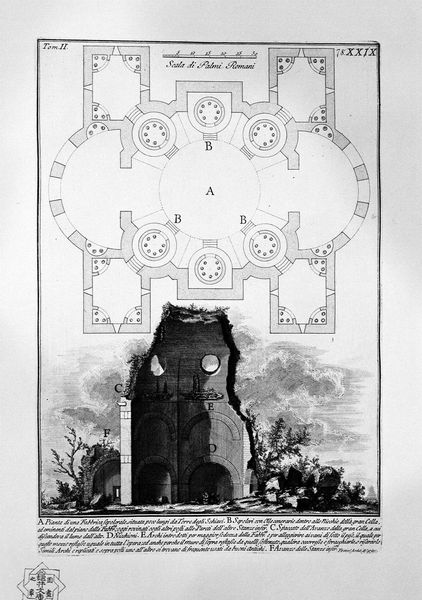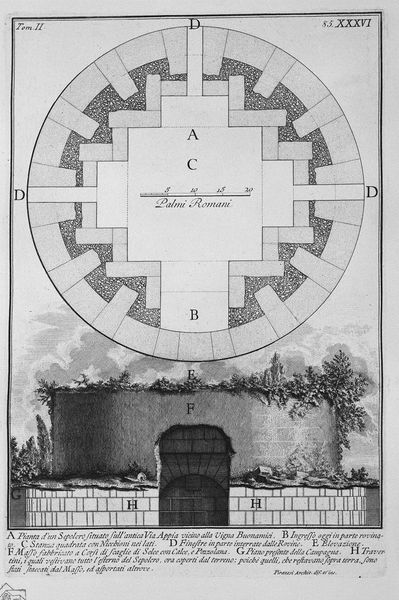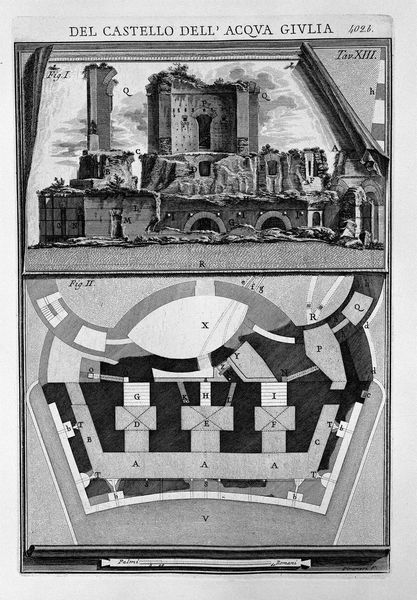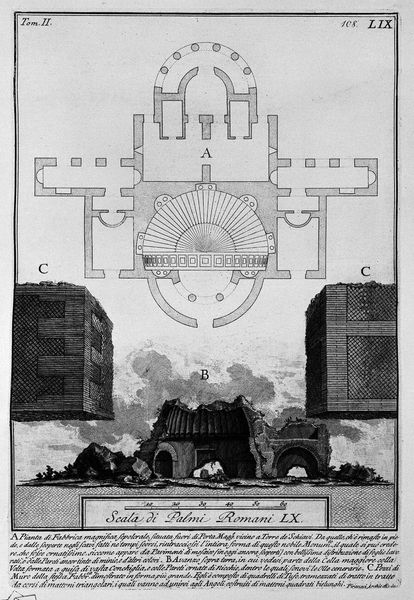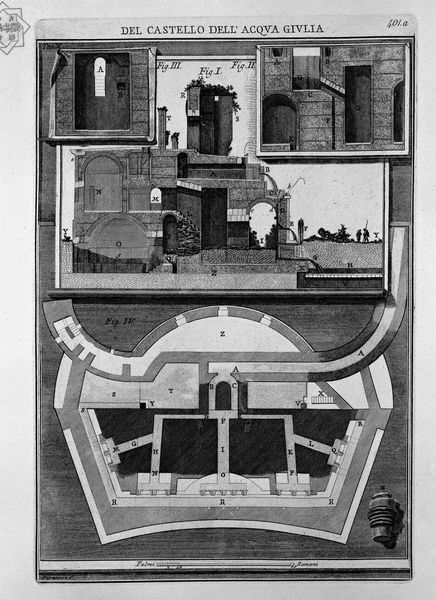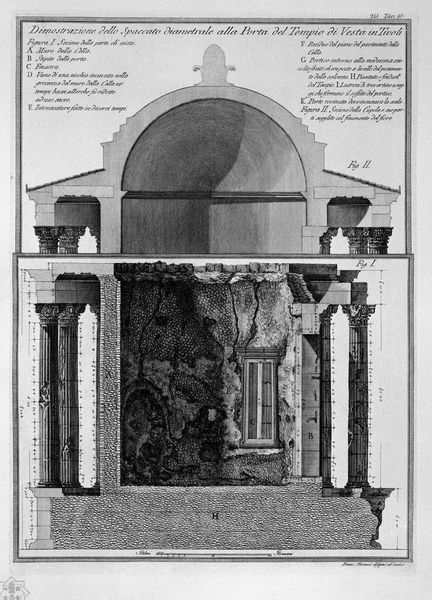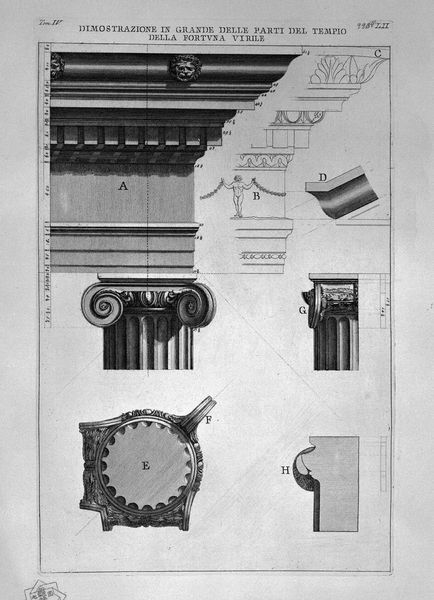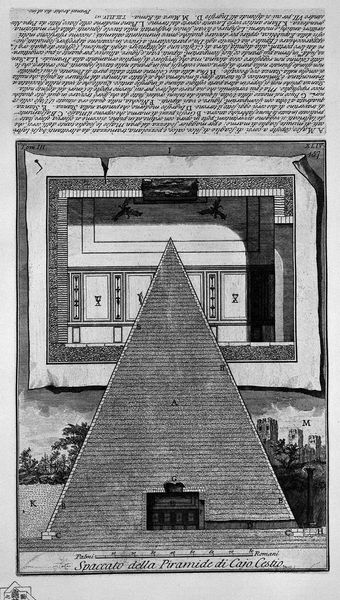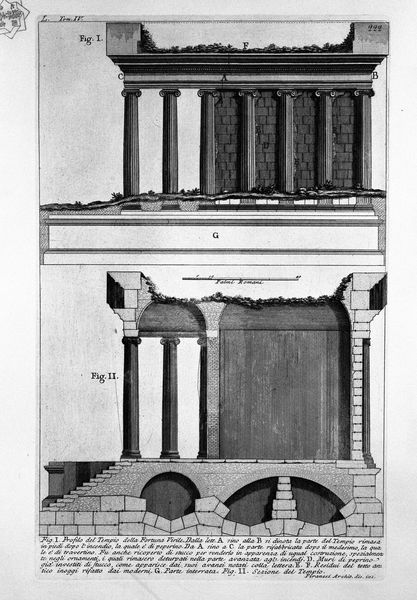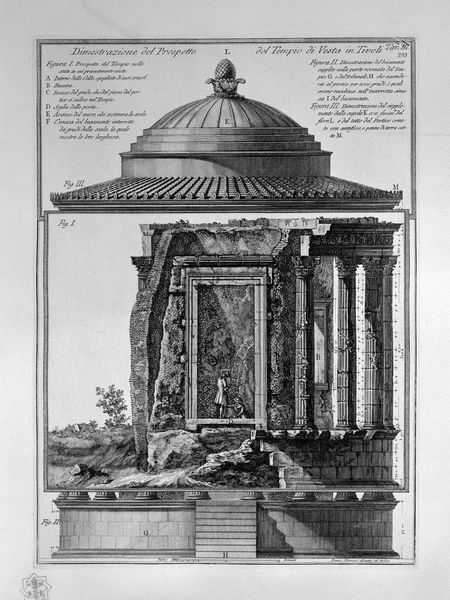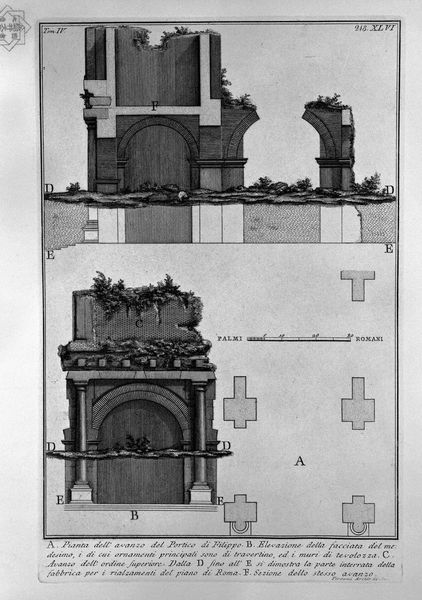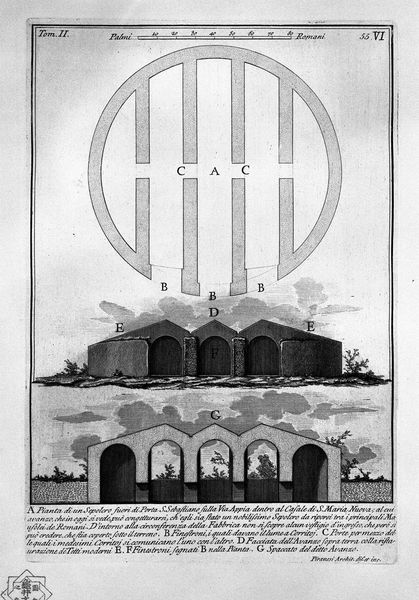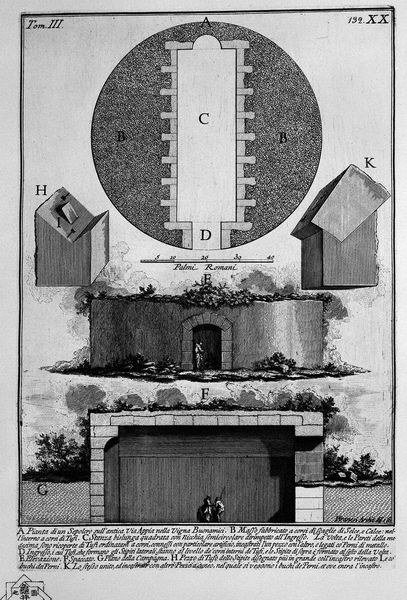
The Roman antiquities, t. 3, Plate XVI. Plan and section of the Mausoleum of S. Emperor Constantine`s mother Helena ta, on the Via Labicana.
0:00
0:00
drawing, print, engraving, architecture
#
drawing
# print
#
old engraving style
#
perspective
#
geometric
#
ancient-mediterranean
#
arch
#
engraving
#
architecture
Copyright: Public domain
Giovanni Battista Piranesi created this etching, a plate from "The Roman Antiquities," sometime before 1778. Piranesi’s Rome was a city of fragments, haunted by its own grandeur, and deeply implicated in the political ambitions of his patrons, including the Vatican. This print depicts the Mausoleum of Helena, mother of Emperor Constantine, along the Via Labicana. Piranesi’s work provides not just an architectural rendering, but a narrative about history, power, and memory. The precision of the architectural details contrasts with the romantic decay, highlighting the tension between the ruin and its former glory. What does it mean to meticulously document the fall of an empire? Consider the female figure at the center of this mausoleum’s history: Helena, a woman of humble origins who rose to become one of the most influential figures in the Roman Empire. Her identity as a woman, a mother, and a Christian convert shapes our understanding of the space. Piranesi invites us to contemplate the layers of history, identity, and power embedded in this decaying structure.
Comments
No comments
Be the first to comment and join the conversation on the ultimate creative platform.
